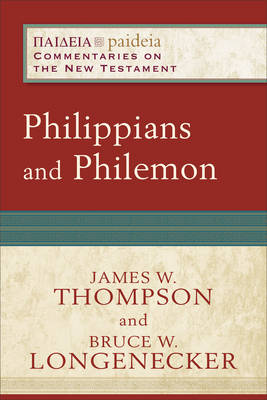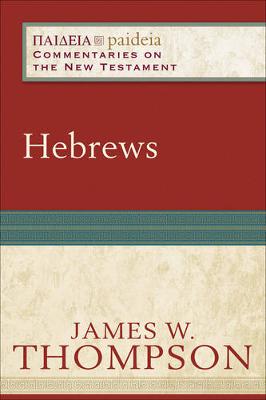Paideia: Commentaries on the New Testament
2 total works
New in the Acclaimed Paideia Commentary Series
Two respected senior New Testament scholars examine cultural context and theological meaning in Philippians and Philemon in this addition to the well-received Paideia series. Paideia commentaries explore how New Testament texts form Christian readers by attending to the ancient narrative and rhetorical strategies the text employs, showing how the text shapes theological convictions and moral habits, and making judicious use of maps, photos, and sidebars in a reader-friendly format. Students, pastors, and other readers will appreciate the historical, literary, and theological insight offered in this practical commentary.
Two respected senior New Testament scholars examine cultural context and theological meaning in Philippians and Philemon in this addition to the well-received Paideia series. Paideia commentaries explore how New Testament texts form Christian readers by attending to the ancient narrative and rhetorical strategies the text employs, showing how the text shapes theological convictions and moral habits, and making judicious use of maps, photos, and sidebars in a reader-friendly format. Students, pastors, and other readers will appreciate the historical, literary, and theological insight offered in this practical commentary.
Hebrews, the second of eighteen volumes in the Paideia commentary series, brings the insight of a veteran teacher and writer to bear on a New Testament book whose rich imagery and memorable phrases have long shaped Christian discourse. The Paideia series approaches each text in its final, canonical form, proceeding by sense units rather than word-by-word or verse-by-verse. Each sense unit is explored in three sections: (1) introductory matters, (2) tracing the train of thought, (3) key hermeneutical and theological questions. The commentaries shed fresh light on the text while avoiding idiosyncratic readings, attend to theological meaning without presuming a specific theological stance in the reader, and show how the text uses narrative and rhetorical strategies from the ancient educational context to form and shape the reader.

